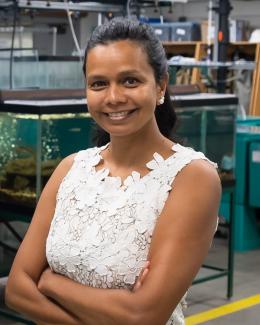Abstract
Commercial production of algal biofuels is currently limited by high capital costs, particularly costs of synthetic pond liners that minimize seepage of cultivation fluids, salts, and nutrients into the subsurface beneath outdoor algae cultivation facilities. Even some profitable nutraceutical companies bear the high costs of pond liners. However, studies of animal waste holding ponds and aquaculture facilities have shown that underlying soils can effectively “self-seal”, potentially eliminating the need for plastic liners. Here, we explored the potential for self-sealing with algae to provide an alternative to synthetic pond liners in unlined algae cultivation ponds. Laboratory-scale soil column experiments were used to investigate soil clogging by algae, a topic rarely discussed in the literature. Columns composed of fine sand, loamy sand, and loam soil displayed reductions in saturated hydraulic conductivity of the entire soil column of up to two orders of magnitude in response to infiltration by the alga Scenedesmus dimorphus suspended in algal culture nutrient solution at a density of 5 × 108 cells L−1. Scanning electron microscope imaging showed a dense algal layer on the surface of each soil column, thickly coating mineral grains with algal material and filling pore spaces. The algal coating was absent in samples at >3 cm depth in the soil columns, and measurements of chlorophyll content also confirmed that algal cells were mostly confined to the soil surface. In this study, the application of an algal suspension contributed significantly to soil sealing. This new application of biological sealing technology should be studied further to determine its utility and durability as an alternative to plastic liners, perhaps in conjunction with soil compaction to achieve hydraulic conductivities beneath algal production ponds that are protective of groundwater quality.




